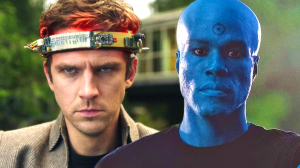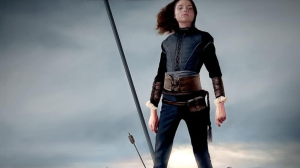Masashi Kishimoto’s Naruto franchise celebrated its 20th Anniversary this year with a special live concert event, a cool time travel crossover arc in Boruto: Naruto Next Generations, and much more. This celebration has been a great reminder for how much the series had actually introduced over its long tenure. Given the multiple jutsus, abilities, and various godly powers in the latter half of the series, it can be all to-easy to forget some of the techniques and visual gags that Kishimoto relied on in the series’ early days. One of which is Naruto’s Sexy no Jutsu.
Videos by ComicBook.com
Naruto’s Sexy Jutsu transformation was one of the more iconic images of Naruto’s early series, and while it was relegated to the background as the series shifted in tone as the characters got older, cosplay from artists like @katsu.ucosplay (who you can find on Instagram here) continue to bring the technique back to the limelight.
View this post on Instagram
Although the Naruto series has its fair share of cosplay inspirations with characters such as Tsunade or Hinata, Naruto’s Sexy Jutsu has its own set of fans. The gag was used as one of Naruto’s go-tos early on because he lacked much of the skill for more complicated techniques, and was appropriately moved to the background when Naruto trained to new levels of strength and skill. Naruto did put a fun spin on it with the Reverse Harem Jutsu toward the end of the series too!
But the Sexy no Jutsu did make its return during the time travel arc in Boruto: Naruto Next Generations. Boruto, Konohamaru, and Naruto got into a contest of whose Sexy no Justu was better, but there was a clear alteration to the move itself. There was a bit more coverage, to say the least, as the anime no longer relied on the pink fluffy clouds to obscure and cover.
Originally created by Masashi Kishimoto for Shueisha’s Weekly Shonen Jump in 1999, Naruto follows a young ninja, with a sealed demon within him, that wishes to become the leader of his home village. The series ran for 700 chapters overall, and was adapted into an anime series by Studio Pierrot and Aniplex that ran from 2002 to 2017. The series was popular enough to warrant a sequel, Boruto: Naruto Next Generations which is set several years after the events of the original Naruto story and features the children of many of its key characters such as Naruto and Hinata.








